16 Plants That Reduce Humidity & Increase Comfort
Author: Jen Worst | Editor: Omar Alonso
Review & Research: Jen Worst & Chris Miller
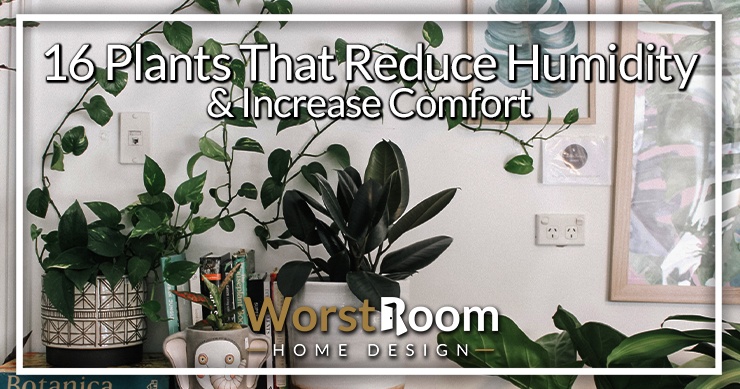
Going green really does have its merits—from reduced energy expenses to better health, there’s a range of benefits to enjoy from doing so. Well, it turns out that going green will also help you battle indoor moisture with these plants that reduce humidity.
Indoor humidity can cause a range of health issues, such as headaches, breathing troubles, dry skin, and the development of mold and mildew.
16 Plants That Reduce Humidity
Sure, you could invest in a dehumidifier, but even better, opt for any of these dehumidifying indoor plants. Better air quality, lesser bills, and a better-looking house—win-win much?
Aloe Vera

This wonder plant has one more benefit to add to its already long list—it can work wonders with indoor humidity.
Belonging to the xerophyte family (plants that thrive in low-water and extreme-weather conditions), this succulent is great for growing indoors, as it sucks up quite a bit of moisture from the air and stores this in its long, gorgeous leaves. Best of all, it’s a perennial plant, so you have a natural dehumidifier 24/7.
All these types of aloe vera are also extremely low maintenance, demanding nothing more than ample sunlight and the occasional watering to grow well. If not aloe vera, you can opt for any plant from the xerophyte family, such as Yucca plants, palms, euphorbias, and certain indoor cactus types.
Peace Lily

A child of the tropics, peace lilies are quite efficient in getting rid of indoor air pollutants such as xylene, hexane, and formaldehyde (emitted by lacquers and other synthetic finishes), vastly improving the quality of air indoors according to the NASA Clean Air Study.
Peace lilies are also quite beautiful, with gorgeous white flowers that instantly elevate the look of any room. These fast-growing plants are also easy to look after, and with the right care and conditions, they can last quite long and flower throughout the year.
Just ensure that these plants that dehumidify are not placed in direct sunlight (fluorescent lighting or low sunlight works) and that the soil is moist and not completely wet. A note of caution—peace lilies can be toxic to pets and children, so ensure they’re placed out of reach or consider an alternative.
Orchids

Though they look posh and high-maintenance, orchids are actually quite easy to grow and care for. These beautiful blooming plants belong to the epiphyte family and thrive in high-humidity environments, requiring at least 60-80% ambient moisture.
Given the amount of humidity they need, you can rest assured that orchids will suck up quite a bit of moisture from the air indoors.
Orchids can be grown in pots with soil or even in the air. For the latter, ensure that there’s adequate support and moisture, and for both, ensure that there’s ample indirect light. Orchids are also non-toxic to pets and children, so you can grow them anywhere in the house.
Tillandsia
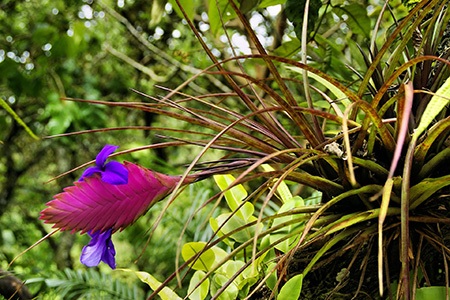
Members of the bromeliad family, these ornamental plants that reduce humidity will quite happily sit on sunny windowsills or any spot with filtered sunlight and quietly do the job of sucking up indoor humidity.
Also referred to as air plants, tillandsias have triangular leaves and like orchids, are epiphytes (hence, the name “air plants”). They love temperate conditions, thriving in the summer months with regular watering and in as basic a container as a glass jar.
A good way to identify whether your tillandsia is getting sufficient water is to check the shape of its leaves—the leaves will cave in more than usual. Tillandsias are especially great for reducing humidity in bathrooms.
Pennywort
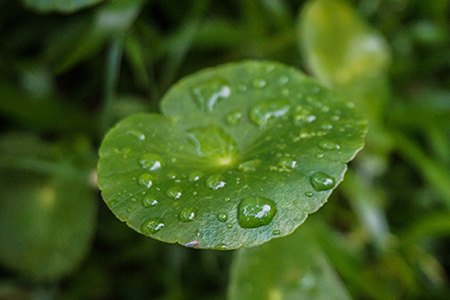
Also called peperomia, pennywort is an evergreen that grows densely stacked leaves that increase the overall surface area greatly, making it more capable of absorbing excess moisture indoors. This plant is a fantastic way of going green rather than running a dehumidifier.
The new leaf growth will have a lighter, more rich green color which darken as they mature. These plants desire being moist, not only in the soil but on the leaves themselves. When they don't have access to misted water droplets, they attempt to extract moisture from the surrounding atmosphere. You still need to spray them, though, as part of their care routine.
Boston Ferns
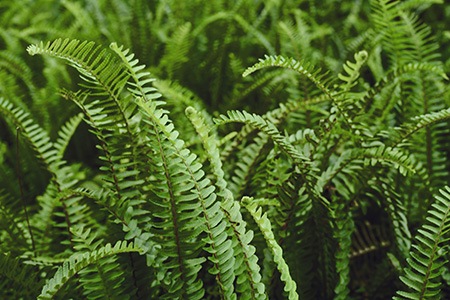
If you want a no-fuss natural dehumidifier that you don’t have to stress about caring for, these exotic evergreens are the perfect option for you.
Boston ferns adore damp environments, efficiently drawing in moisture from the air and reducing indoor humidity levels. These types of ferns also grow best in low-light conditions, so ensure that there’s sufficient indirect light for your fern.
While Boston ferns do well even in low humidity, they will not survive in dry environments. If the air inside your house gets drier than usual at some point (such as in the winter months), misting the leaves of your fern regularly will prevent the fronds from drying up and dying.
Additionally, ensure that the soil is moist enough so that there’s sufficient water for the plant.
Spider Plants
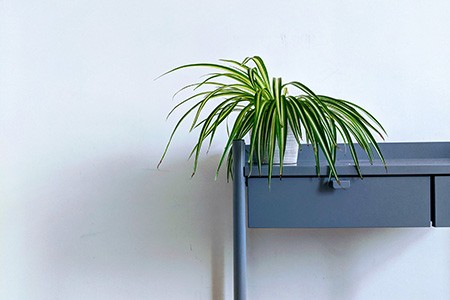
Spider plants don’t just look great; they’re ridiculously productive, with the impressive capacity to remove as much as 90% of formaldehyde from the surrounding air.
Their elegant leaves provide ample surface area for efficient moisture absorption; since they require humidity to thrive, this also benefits the plant by keeping its leaves fresh and preventing browning.
These hardy, fast-growing plants get their name from the little spider-shaped offspring that they produce on maturing. Spider plants are quite easy to look after—you just need to place them in a spot with low or indirect sunlight and forget about them.
If your house sees extremely high humidity levels, clustering spider plants will help create one effective unit to suck up the excess moisture.
Begonias
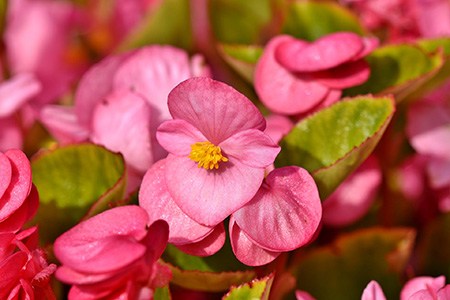
With over 1,800 varieties in the family, these tropical residents are among the most common houseplants across the world, beloved for their vibrant foliage. These plants that reduce humidity bloom in the warm summer and spring months, especially if kept outdoors during these months.
While they’re easy enough to care for in warmer weather, they may be a little problematic in the dry winter month, when humidity levels decrease. In such cases, they require additional care in the form of sufficient water in the soil. Misting the leaves may also help.
Regardless of the weather, all the types of begonias require diffused sunlight (even partially shaded areas work) and well-drained soil.
English Ivy
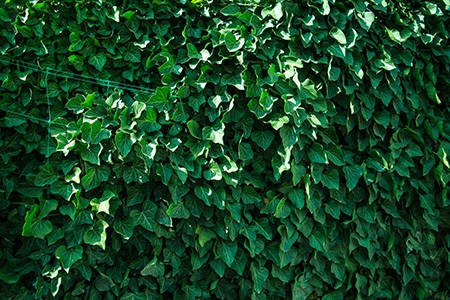
Though typically abundant outdoors, English ivy does quite well indoors, too—they’re equally at home winding around trees as they are hanging indoors.
This fast-growing evergreen vine is great at reducing the number of toxins and mold spores in the air indoors, and being extremely low-maintenance and hardy, is an excellent option for new plant parents.
With well-drained soil, damp air, indirect sunlight, and just a little bit of love, your English ivy will grow quite happily in your bathroom, kitchen, or bedroom. Additionally, for improved humidity absorption, hang these plants that absorb humidity up in hanging baskets or place them in an elevated spot.
Devil's Ivy
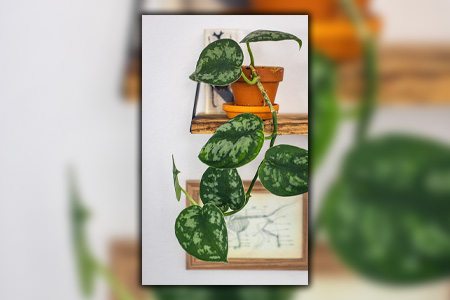
Also known as Golden Pothos (and scientifically as Epipremnum aureum), these types of ivy plants are mainly a vine that will crawl and climb over any surface it can to seek more sunlight. It doesn't need a lot of attention from you, which is a nice plus.
The leaves themselves are green with yellow spotting and are large and heart-shaped. This increased surface area is good, but another added bonus is the leaves are thick, meaning they can each hold more moisture than otherwise.
Palms

Though you’d normally associate palms with Middle-Eastern mansions or beach resorts in the tropics, these natural dehumidifier plants can quite easily settle into your living room and have their leaves absorb quite a bit of moisture while they’re at it. And you don't have to deal with all the disadvantages of a dehumidifier, which are numerous.
There are plenty of palm varieties that you can consider if you’re going the palm route for a natural dehumidifier, such as bamboo palm, windmill palm, reed palm, lady palm, and areca palm.
Regardless of which variety you choose, the result is pretty much the same—significant amounts of formaldehyde and other indoor pollutants being sucked in by the plant.
Palms are generally quite low maintenance, but if you want the ultimate low-maintenance palm, consider a reed palm, as it only requires dim lighting and moist soil to grow well indoors.
If you have the space, consider windmill palms; these plants that reduce humidity are gorgeous to look at and can instantly elevate the room’s aesthetic.
Purple Waffle Flower

If you want to bring in more colors than just green, you won't do better than these purple dehumidifying plants. The purple waffle flower need sunlight but it can be indirect, and it can manage only being watered every three weeks.
These indoor plants absorb humidity, which is what we're looking for, but they also can help reduce the amount of carbon dioxide in the air. When they produce flowers, you'll get a nice, beautiful surprise, too.
Calathea
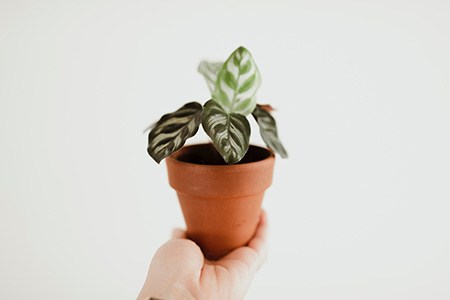
The secret to a calathea’s gorgeous verdure? Ample amounts of humidity. Ergo, excellent natural indoor dehumidifiers.
Calathea grow well in bright light and extremely humid settings; without sufficient moisture, their leaves tend to curl inward. However, ensure that you don’t overwater the plant as this will eventually cause root rot and kill it.
Additionally, though they love bright light, direct sunlight is not advised, as the harsh light can bleach the leaves and cause them to lose their lovely natural color.
Snake Plants
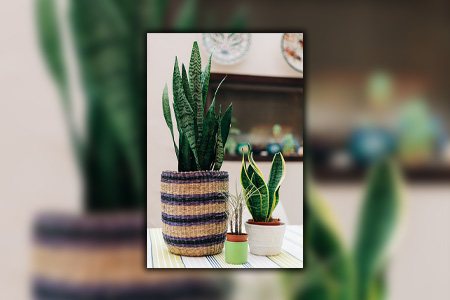
These indoor plants for humidity can seriously walk the talk, having emerged the victor in a study of the most effective toluene (a type of indoor air pollutant) remover, beating 11 other competitors to do so.
This means that they’re excellent additions in houses with asthmatic people. Snake plants also look great, adding a beautiful green accent to any space they’re set in, so you’ve got a plant that’s just as good looking as it is effective.
Lilac Plants
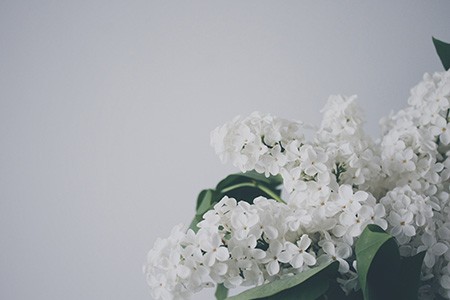
If you’ve been using lilac to cure your aches, pains, fever, or digestive issues, you can now add one more task to your lilac plant’s to-do list—reducing indoor humidity.
These pretty plants can suck up the moisture indoors and while they’re at it, treat you with lovely flowers throughout the year with just the bare minimum care. Get any types of lilacs and you'll appreciate the beauty as well as the lower humidity.
Lucky Bamboo Plants
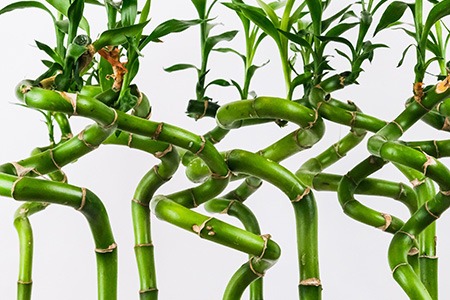
You couldn’t kill a lucky bamboo if you tried—these plants are nearly indestructible, as are most types of bamboo, which is why when you find some in the wild you find a ton.
Though they don’t actually belong to the bamboo family, these plants gained their name for their bamboo-like stalks. While earlier popular as only ornamentation or luck-bringers, bamboo plants are now popular as natural dehumidifiers, since they thrive in humid environments.
These plants come in various sizes and grow well in both water and soil, but remember that if you’re growing them in soil, you’ll need to repot annually.
Plants That Reduce Humidity Decrease Problems Indoors
You don’t always need to resort to technology—most times, Mother Nature has enough solutions. Now you know what plants absorb humidity and all that's left is to choose the ones you like the most.
Bear in mind, though, that just because these plants that reduce humidity do well in humid conditions, it doesn’t mean that they can withstand overwatering, so figure out your plant’s water requirements and ensure it’s only getting that much water from both the air and the soil.
You'll Also Enjoy:
- 6 Plants That Repel Ants Outdoors & Inside Your Home
- 10 Plants That Repel Mosquitos in Your Yard & Indoors
- 7 Plants That Repel Fleas & Provide Secondary Benefits You'll Love
- 14 Plants That Repel Spiders Indoors & Outdoors With Little Effort
- 21 Plants That Repel Ticks: Fresh Smells We Love & Ticks Hate!



